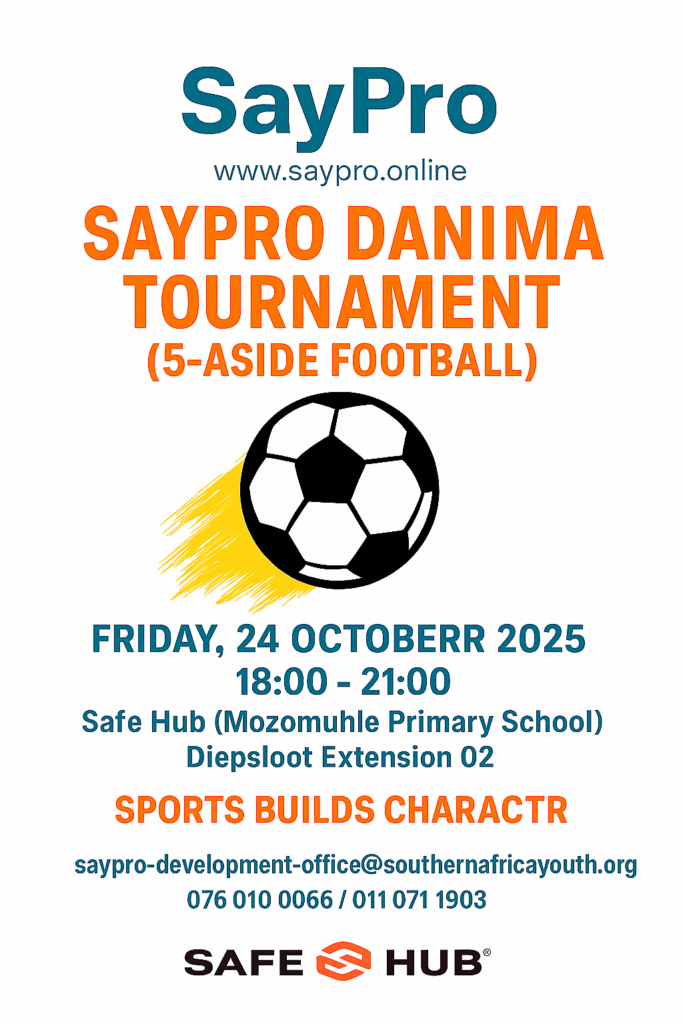To the CEO of SayPro, Neftaly Malatjie, Royal Committee Chairperson Clifford Legodi, SayPro Royal Chiefs and Human Capital
Kgotso ebe le lena
INVITATION TO SAYPRO DANIMA TOURNAMENT (5-ASIDE FOOTBALL)
SayPro Chief Development Royalty together with Safe-Hub proudly invite you to join us for the SayPro DaniMa Tournament (5-aside Football).
Venue: Safe-Hub Sports Ground(Mozomuhle Primary School) Ext 02
Date: Friday, 24 October 2025
Time: 18:00 – 21:00

This exciting tournament is set to bring together talent, teamwork, and community spirit. Gather your team, bring your supporters, and be part of an unforgettable evening filled with fun, energy, and football passion Highlights:
- Thrilling 5-aside football matches
- Community engagement and networking
- Fun and safe environment for all ages
We look forward to seeing you there!
My Message Shall End Here
Daniel Makano | SayPro Development Specialist | SayPro
